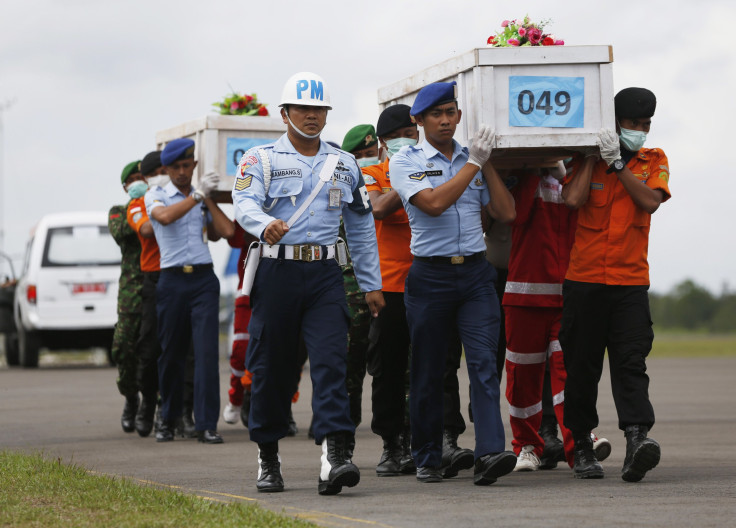AirAsia Flight 8501: Less-Experienced Co-Pilot Was In Control Before Plane Climbed Too Fast, Reports Say

AirAsia Flight 8501's relatively inexperienced co-pilot was at the controls when the jet made an unusually steep climb causing it to stall and crash into the Java Sea, two people familiar with the probe said, citing investigators, according to The Wall Street Journal.
Indonesian authorities are currently investigating the factors that may have confused first officer Rémi-Emmanuel Plesel, who had significantly fewer flying hours than the more experienced commander, Captain Iriyanto, sources reportedly told the Journal. Authorities analyzing the flight data recorders to understand the cause of the crash are also trying to determine if the Airbus A320-200’s computerized stall-protection systems malfunctioned or were disengaged, leading to the plane's abnormally steep climb that led to its crash.
While an analysis of the black box, according to the sources, indicated that the first officer’s control stick pulled the plane’s nose up, worsening the stall, “Investigators, safety experts and AirAsia officials have stressed that it is too early to draw definitive conclusions, and they have declined to discuss specific findings so far,” the Journal reported.
Air France 447, which crashed into the Atlantic Ocean on June 1, 2009, killing all 228 people on board, was also being controlled by an inexperienced co-pilot who lifted the Airbus A330-200's nose instead of lowering it and induced a stall that contributed to the crash.
Plesel, who started his career as an airline pilot after leaving his job as an engineer at Total SA, had about 2,200 flight hours over a span of three years flying for AirAsia, while Iriyanto, a former fighter pilot, had about 10 times more flying experience, including more than 6,000 hours flying an A320 for the low-budget carrier, according to the Journal.
Flight 8501 crashed on Dec. 28 with 162 people on board on its way from Surabaya, Indonesia to Singapore after the pilot requested for a change of course to avoid bad weather. At least 70 bodies have so far been recovered from the Java Sea, while the Indonesian search and rescue agency continues to search the sea for more bodies after the military withdrew from the operations on Tuesday.
Investigators are examining the interaction of pilot commands and computer-controlled flight systems during the climb and the subsequent descent to determine what contributed to the plane's steep climb, the Journal reported.
Meanwhile, Indonesia's National Transportation Safety Committee (NTSC), which focused its probe on human error and aircraft damage as possible reasons for the crash after ruling out any terrorist involvement in the incident, said Thursday that the aircraft was in good condition and all crew members were properly certified.
Mardjono Siswosuwarno, head investigator for NTSC, told Reuters that the flight data recorder provided a "pretty clear picture" of the last moments of Flight 8501, adding that the first officer was flying the plane at the time of the crash. Investigators had previously said that the sound of the alarms, which also included one that goes off when an aircraft stalls, were heard on the plane's cockpit voice recorder as the co-pilot and captain struggled to regain control of the jet.
A preliminary report on the investigation into the crash has been filed with the International Civil Aviation Organization, but authorities said that the analysis of the flight data recorders were not included in the report.
© Copyright IBTimes 2024. All rights reserved.











